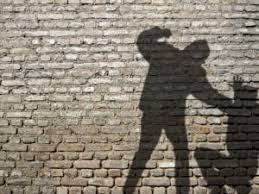And now we come to the final installment of this series on tweaking your jiu-jitsu for functional self-defense and address the great weakness and missing element from the art. And that is the true lack of dealing with what I refer to as the pre-fight threat containment.
Before we get too much further, I want to pause a second and point out that this is not a jiu-jitsu problem. This is a problem that BJJ has in common with every other martial art, defensive shooting methodology, and even combatives/streetfighting systems. Too often, by too many instructors and experts, this topic is only covered in the most superficial way possible. It almost always starts and ends with a general admonition about “keeping your head on a swivel” and being situationally aware. And that is if it is even brought up at all! But that is completely facile advice if you do not teach how to implement that, and not show how to train it to make it an actionable skill set.
Even the combative or street focused arts rarely teach it. You see this constantly in the arts that love to focus on dubiously legal concepts like pre-emptive striking. How can you truly know if you are legally justified and tactically able to do something like that if you cannot articulate the signals that indicate it is appropriate? If you don’t know when it is time to launch that pre-emptive cycling hammerfist attack, then it is irrelevant how good you are at it. Being good at fighting does not equal in any way understanding when to fight.
What do we need to know here? We need to understand how criminals act, think, and operate. We need to know the best ways to get ourselves deselected as victims. We need the ability to recognize pre-assault indicators, as well as the most likely and most vulnerable locations where we can be attacked. We need the verbal agility to engage with the attacker and not fall prey to his well practiced lines that allow him to close with us. We need to be able to integrate that skill with proper movement because it does not matter if you have the verbal agility of a standup comedian if you stop moving when you talk. We should be able to de-escalate a potential violent situation and resolve it without having to fight. And there are a few other related skills along these lines, but suffice it to say that there are a number of important things that we should be good at so we never need to resort to any defensive ability.
Now, having gone over that, think for a moment on the last time you worked any of those skills in the last shooting course you took. Or the last time you were on the mats at your dojo. When was the last time you got together with some friends in a training group and worked on even one aspect of this? We all know the answer. Unless you have trained with a tiny handful of specific people, that answer is never.
So regardless of what discipline you come from, find the coursework and instructors who can rectify this, and make sure you have plugged it into whatever fighting methodology you count on to defend yourself, whether it is jiu-jitsu, or something else.

